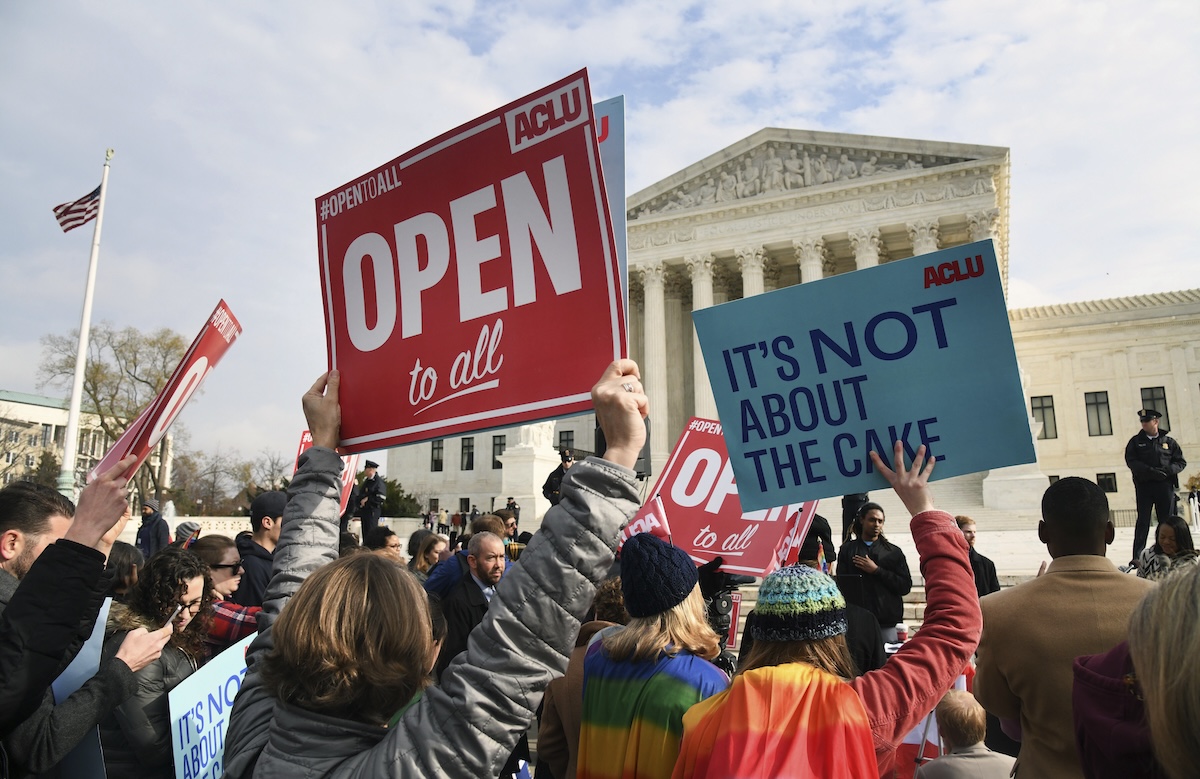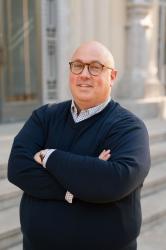In the wake of the Supreme Court’s decision in Obergefell v. Hodges (2015), in which the majority of the court ruled that the Constitution supports a right to marry for same-sex couples, many Americans in the “wedding business” faced a dilemma. Bakers like Jack Phillips and web designers like Lorie Smith found themselves unable to deliver services relating to weddings for same-sex couples owing to issues of conscience. The Supreme Court has intervened, however, and vindicated the conscience rights of many in cases like Masterpiece Cakeshop v. Colorado Civil Rights Division and this term’s 303 Creative LLC v. Elenis, but state courts and lower federal courts are still looking for ways to bypass the Supreme Court’s clear instruction on these constitutional issues and impose upon the consciences of bakers like Melissa Klein. In the case of florist Barronelle Stutzman, for example, the Washington Supreme Court flouted the U.S. Supreme Court’s clear precedents.
As these collisions between worldviews become more frequent, the existence of specific statutory laws that protect conscience become more and more important. It is in the context of these types of conflicts that the Religious Liberty in the States (RLS) index was launched by the Center for Religion, Culture & Democracy, where I serve as executive director. The RLS, now in its second edition, is a data project and index ranking of the 50 states based on state-level statutory and constitutional safeguards that protect free exercise.
One of the goals of the RLS, the first project to measure state-level religious freedom protections, is to provide a rigorous, dependable picture of what it measures for the use of policy makers and legislators, advocates of religious freedom, and scholars interested in related trends. Every item tracked and measured by the RLS is in place (or not in place) in the various states as a result of the action of democratically accountable bodies, namely legislatures. As a result, ordinary citizens, armed with the information the index provides, are free to affect change in their home states so that they and their neighbors can enjoy more free-exercise protections. The project is intentionally narrow—only statutory and constitutional protections are included. Like any similar project, it provides only a snapshot of one aspect of what constitutes the broader reality of religious freedom at a given time. It does not consider cultural factors or the judicial, administrative, or executive actions in states that impact the practice of religion. All these other aspects of the complex of factors that result in the lived experience of citizens of any particular state either elude quantitative measurement or would demand a different and largely incompatible methodology for data collection and analysis.
Some more counterintuitive results of the RLS rankings are a bit surprising. Illinois and Washington, places where religious people like Barronelle Stutzman suffered real animosity, rank at the top, and states that are more culturally amenable to religious liberty, like West Virginia, rank at the bottom. The primary benefit of a federal system is that state law matters at least as much as federal law. Each state’s path to where it ranks is a unique story that is contained in legislative histories, election promises, effective lobbying, and the pressure of special interests. But what is clear from both the RLS and the experiences of citizens is that every state—including Illinois at the top and West Virginia at the bottom—has room for improvement regarding the protection of the free-exercise rights of all citizens.
The fact that state law matters so much for religious liberty brings two concrete cases to mind—one in a traditionally red state and the other in a traditionally blue state. Both are clients of my law firm, First Liberty Institute, of which the CRCD is an initiative. Both have been involved in years-long conflict with states that have attempted to impose upon their religious beliefs.
In 2013, Aaron and Melissa Klein, the owners of Sweet Cakes by Melissa in Gresham, Oregon, declined to bake a wedding cake for a same-sex wedding. The same-sex couple filed a complaint with a state administrative agency, which then fined them $135,000 for violating Oregon statutes. Ultimately, the case was adjudicated through the Oregon state courts, with the Oregon Court of Appeals allowing the decision of the administrative agency to stand and the Oregon Supreme Court refusing to consider an appeal. The U.S. Supreme Court, however, vacated the decision of the state court and remanded it for reconsideration in light of the Supreme Court’s Masterpiece Cakeshop v. Colorado Civil Rights Commission. Upon reconsideration, the state of Oregon imposed upon the religious convictions of the Kleins a second time, ignoring the U.S. Supreme Court’s guidance. And again, SCOTUS vacated the decision, this time with the instruction to reconsider in light of 303 Creative LLC v. Elenis. The case is still ongoing after nearly a decade.
There are those who might say, however, that given that Oregon’s population is one of the least religious in the nation, the Kleins’ circumstances should come as no surprise. But another FLI client faces similar harassment from the state of Texas, with one of the most religious populations in the nation. Judge Dianne Hensley is a justice of the peace in McLennan County, Texas. Texas allows, but does not require, justices of the peace to perform wedding ceremonies. In the months following the Obergefell decision, many judges, including Judge Hensley, categorically refused to officiate any weddings. But after seeing that many couples were left without a reasonable option to obtain a civil marriage in her county, Judge Hensley began officiating weddings again and found nearby affordable options for same-sex couples, given that her conscience would not allow her to solemnize such unions. Having received no complaints but being alerted to Judge Hensley’s referral scheme for a same-sex couple via a newspaper article, the Texas State Commission on Judicial Conduct initiated an inquiry into her conduct in May 2018, which ended in a public warning issued to the judge that was later affirmed by state trial and appellate courts. Her case is now pending before the Texas Supreme Court.
Both the Kleins and Judge Hensley are facing lawsuits in state courts that are based on state law. If Oregon had a statute like Mississippi’s first-in-the-nation Protecting Freedom of Conscience from Government Discrimination Act, which insulates citizens from facing government sanction for nonparticipation in a wedding that violates their sincerely held religious beliefs, the Kleins would never have faced punitive fines and nearly a decade of litigation. Similarly, had Texas passed a measure like that in Mississippi or similar laws in Utah and North Carolina, which expressly provide public officials the right to recuse themselves from performing weddings that present a conflict with their conscience, the Texas Commission on Judicial Conduct would have been unequivocally barred from initiating action against Judge Hensley.
As it stands, we have every confidence that both clients will prevail, but in a very real sense their rights have already been violated by the fact that they have been required to defend themselves against the encroachment of state actors. The laws of Oregon and Texas could have saved them both the time, distraction, and worry that accompanies litigation of any sort, and the RLS, by documenting the existence of such provisions in other states, has illuminated the pathways for every state to bolster the free-exercise protections of their citizens. Such statutes bar the type of administrative and bureaucratic harassment that the Kleins and Judge Hensley have unjustly endured.
Current members of the U.S. Supreme Court have been attacked for believing that religion is “worthy of special treatment.” It is true that the current composition of the court has proved to embrace a view of the Constitution that takes seriously the explicit enumeration of “free exercise” as a right that must be protected if we are honest about the words of the U.S. Constitution. A court that is friendly to free-exercise claims will mean that litigants looking for different outcomes will need to secure those victories in federal district or circuit courts or find ways to litigate in state courts under state law, rather than federal law, which would have to be applied in a way consistent with Supreme Court precedent. Even in the relatively short time since Dobbs was handed down and signaled a clear unwillingness of the present court to recognize a federal constitutional right to abortion, litigants have turned to state courts with appeals to state constitutionsto serve their ends.
It would serve the ends of advocates for liberty to see state legislatures take religious freedom seriously. While some states have responded and passed new laws that provide more robust free-exercise protections to their citizens, representatives of state legislatures, governors, and attorneys general who should be quite amenable to religious freedom often claim that federal protections are all their citizens need. Unfortunately, that is simply not true—just ask the Kleins in Oregon, Judge Dianne Hensley in Texas, and Baronelle Stutzman in Washington. State law and state courts are the primary guarantors of liberty in our federal system, but citizens are left unnecessarily vulnerable when state officials defer to the federal constitution and laws. Before those hostile to religious freedom find ways to exploit the gaps, those who want to preserve and advance religious freedom should find ways to close those gaps.
While the Religious Liberty in the States index represents only one aspect of what influences the lived experiences of Americans, it is a vital aspect with far-reaching implications. Each state at the top is not necessarily a religious-freedom paradise, and the ones at the bottom are not necessarily religious-liberty wastelands in the U.S. constitutional scheme. We are confident, though, that with regard to what the RLS measures, some states are clearly doing better than others and that all states have room for improvement.

